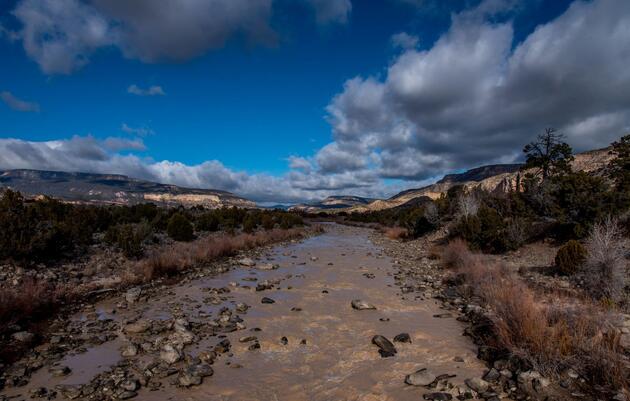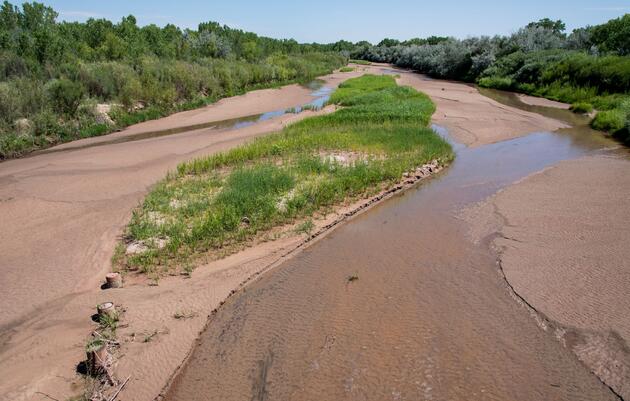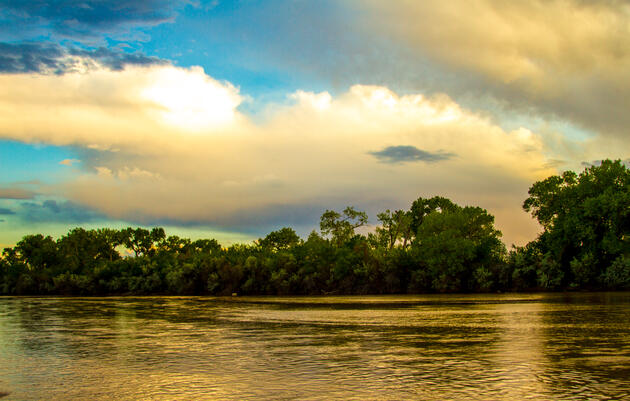The environmental activist Mex Yeh once said that water management terminology is much like Klingon- foreign and impossible to comprehend as if from another planet. Nowhere does this adage hold more true than with the Rio Grande Compact. Words such as “compliance”, “article 7”, “apportionment”, “relinquishment credits”, and “depletion”, hold their very own very specific Compact meaning known only to the avid water wonk or seasoned water manager. The Rio Grande Compact is, arguably, the most important document effecting the ecology of the Rio Grande yet is one of the most cryptic and puzzling documents I have bore witness to.
The Rio Grande Compact was ratified in 1939 between the States of Colorado, New Mexico and Texas and quantifies how much water each State must deliver to the downstream State in order to remain in compliance. If a State is out of compliance with the Compact the results is a costly, litigious mess that potentially involves the United States Supreme Court. The big take-home for New Mexico is that we are permitted to have up to a 200,000 acre foot accrued water debt to Texas (an acre foot is a measure of water that is equal to the volume of one foot of water over an acre of land). If our debt is greater than this, we are out of compliance. Straight out the gates, by 1942, New Mexico was in trouble with the Compact largely due to high river flows from the 1941-2 El Nino years that filled Elephant Butte Reservoir and rendered the connection between the upstream Rio Grande and the Butte into a swampy, sandy mire with no clear connecting river channel. One can only imagine what an oasis this wetland mire was for wildlife, but such a mess made efficient movement of water impossible and cost our State direly.
From 1948 through 1968 New Mexico maintained a water debt to Texas that was greater than 200,000 acre feet and, not coincidently, this era held some of the most rash and long lasting engineered degradations to the Rio Grande. In order to improve the connection of flows between the Rio and the Elephant Butte Reservoir, the Low Flow Conveyance Channel was constructed, a 70 mile ditch that was designed to carry all of the non-flood flows of the Rio Grande. This conveyance channel was constructed to address a problem occurring in less than 10 miles of the stretch in the upper end of the Reservoir, and stands as an example of the hyper-engineering attempt to turn our living river into a conveyance system in order to manage Compact compliance. The Low Flow Conveyance Channel was rendered inoperable in 1983 in another high flow El Nino year that filled the Reservoir and plugged the lower end of the Channel by depositing a bunch of sand. Nature punches back.
Today we find ourselves in the grips of yet another “historic drought year” on the Rio Grande (it seems like we just got over a “historic drought year”). Our current compact status is that we have accrued a 96,000 acre feet debt, largely over the past 2 years. This debt occurred during a very wet year (2019) and a very dry year (2020), and reflects how dependent New Mexico is on rainfall for helping our compliance. Both these years have had historically low summer rains. All eyes are on this year’s monsoons. The most common water management strategy that I am hearing these days is “pray for rain”. Hey, I’m praying!
With our Compact status faltering, the drumbeat of hyper engineering solutions are sounding. I have heard suggestions such as that we need to mow all vegetation in the river channel, or that we need to re-operate the Low Flow Conveyance Channel. I have even heard the suggestion that we should make the Low Flow Conveyance Channel a “High Flow” Conveyance Channel and run all river flows for 70 miles down a ditch. Having worked in this business for decades, I have found that ecologically friendly solutions can be as effective as old-school engineering solutions and potentially longer lasting. I’ve also found that, were it not for the Endangered Species Act, old-school solutions would hold sway and any hope for a living river would be disregarded.
Compact compliance is critically important for the State of New Mexico’s well-being and is directly linked to our farming community’s ability to stay afloat. Farmers are already feeling the brunt of the debt with shortened irrigation seasons and diminished supplies. For the Rio Grande, especially in the central part of New Mexico, farmers and ecology are interdependent; less water for farmers means a drier river.
The Endangered Species Act is not perfect, but it has led to a better world. During the 1990’s many water management agencies in New Mexico began to hire biologists and forward thinking engineers to help navigate legally perilous ESA waters. This shifted the focus of agencies like the US Bureau of Reclamation and New Mexico Interstate Stream Commission towards developing innovative projects that improve water conveyance while respecting an ecologically functioning river. A great example of this type of project is the recent Rio Grande restoration project conducted by the US Bureau of Reclamation at Bosque del Apache NWR- 2 miles of restored river that, at the same time, greatly improves water conveyance. These types of win-win solutions are not always in reach and compromises are needed. As our State navigates the perilous Compact waters, thank the Rio Grande Silvery Minnow, a local farmer, and your agency engineers for working towards a better future- they are all part of keeping our Rio Grande alive and flowing.






